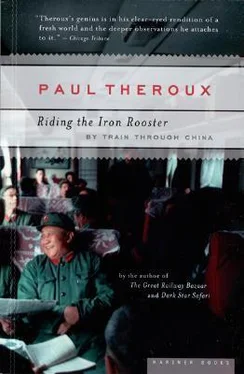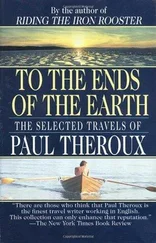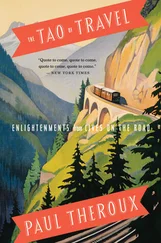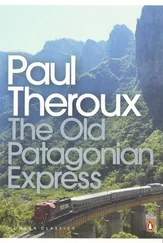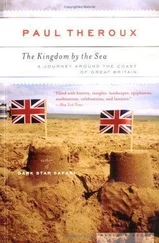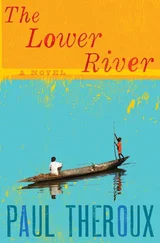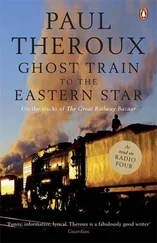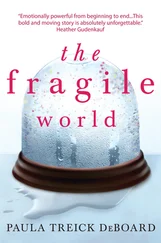"He meditates near the Oracle statue in the chapel, and he speaks for it."
He showed me the Oracle statue. It was a small doll on a shelf, robed, with staring eyes, outstretched arms and its mouth open as if in a shriek. It gave me the creeps. I wondered whether I was alone in finding most dolls of this kind rather distressing things.
The pilgrims at Drepung had come hundreds of miles — and in some cases more than a thousand miles — three or four days, jouncing in the back of a beat-up truck. They brought what little money they had, they brought all their children, and quilts and food; they brought meat and vegetables to sell at the market in Lhasa. I was impressed by the way these extremely poor people shared their food, and gave money at the shrines, and money to beggars. They even fed the dogs that hung around the monasteries in yelping, mangy packs.
We walked around, Ralpa identifying the various pilgrims from their headgear or their robes or their earrings, or the way they braided their hair.
At one chapel he said, "Do you see that Tara figure on the wall? It appeared all by itself. It was not carved by a human hand. One morning the monks looked at the stone wall and it was there."
I peered at it.
"You don't believe it," Ralpa said.
"I don't know," I said. It didn't seem any more absurd than the Mormon belief in the golden tablets and the Angel Moroni, and it was a good deal more tangible than the apparition of Our Lady of Fatima or the stigmata of those Italian priests who began bleeding every Good Friday.
There were more miraculous murals — and some spontaneous statues — at the Jokhang, Tibet's holiest place: Manjushri's head popped out of one wall, a Tara had sketched itself on a shelf, and a small stone buffalo had materialized in a corner of a chapel.
I had arrived near the end of the Tibetan New Year, which is a fifteen-day festival known both for its piety and its rambunctiousness. That was why there were so many pilgrims in Lhasa. The monks — about a thousand or more — had gathered at the Jokhang to chant mantras. They were led by an elderly bald figure called the Ganden Tipa, the holiest monk in Tibet and the spiritual leader of all these monasteries. He sat cross-legged and robed in gold, facing away from the monks. The monks fidgeted and laughed. Some chanted, others fooled and giggled. They were all ages — some were no more than teenagers, and some were women; but they had shaven heads and were robed like the men, and so they were almost indistinguishable. I watched it all from an upper balcony, where Tibetans tossed scraps of paper with mantras written on them to the monks below, who made piles of them.
Through Ralpa I asked a monk whether it was true that the Tibetan tradition of Buddhism was characterized by debating subtle points of theology.
The monk nodded vigorously and said, "Yes, yes!"
"Could you give me an example?"
"Yes. The abbot asks, 'Does a rabbit have a horn?' And a monk may stand up and say, 'No. A rabbit does not have a horn.' Then the abbot hits the monk with a stick and the other monks laugh. Another monk may say, 'Yes. A rabbit does have a horn. He digs a hole in the ground, and what does he use? Not his paw, but the nail on his paw. That is his horn.'"
"Does that settle the matter?"
"Maybe they argue a bit more, about whether it is a horn or not."
All this time, everywhere in Lhasa, the prayer wheels were spinning. Most pilgrims had the hand-held variety, a sort of upright pencil sharpener. The pilgrims plodded clockwise and spun the wheel — often very quickly, because the prayers uttered by the wheel (there is a scribbled mantra inside) are weaker than spoken prayers. These prayer wheels were usually copper or brass, but occasionally they were embossed with silver or else gilded. Prayer wheels were fastened in the temple enclosures — some were the size of oil drums and very hard to turn, others were no larger than nail kegs, and you could hear the flutter of the mantras in their innards as they spun. They had handles, they were greased with yak butter, and they were all inscribed in Tibetan and Sanskrit with the efficacious mantra om mani padme hum —the om is the most powerful and mystical element in the mantra, a combination of three Sanskrit sounds that sum up the three-in-one nature of the universe. These prayers are so sacred that just writing them or carving them in stone (the sacred om is frequently seen hacked into cliff faces) is regarded as much more pious than putting up statues.
Tibetan pilgrims thronged the Jokhang Temple, muttering prayers, prostrating themselves and gawking at the monks. They were from distant places, and they were dazzled by this Vatican of Tibetan Buddhism to such an extent that their pilgrims' piety seemed to vanish among the gold statues and lurid murals (of hell and heaven) and incense (sandalwood, cypress leaves) and dull, clopping drums. The pilgrims' eyes glittered in the half-dark of the cloisters, and these people took on the odd curiosity of tourists with their squints and stares, as if, so startled were they by the droning monks and the aromas and the drooping tankas, they had fogotten to pray.
Here, very recently, in the inner sanctum of the Jokhang, under the serene gaze of the holiest figure, Jowo Shakyamuni, the Precious Lord, the Chinese army had kept pigs, and the rest of the Jokhang had been commandeered as a barracks. They had been following the Mao dictum set out in the well-known essay "On Going Too Far": "To right a wrong it is necessary to exceed proper limits, and the wrong cannot be righted without the proper limits being exceeded." That was the Chinese epitaph for Tibet. You didn't close the temples — you kept pigs in them. You did not simply shut the monasteries — you defrocked the monks, put them into factories and forbade them to pray; and you used the monastery timbers for chicken-coops. The Mao policy of systematic humiliation of traditional belief reached its apotheosis in Tibet. Now the Chinese admit to "mistakes… excessiveness and errors during the ten chaotic years of the Cultural Revolution," as the Chinese diplomat Zheng Wanzhen put it in his defense of Chinese policies in Tibet which he wrote for The Washington Post in 1987. The Chinese reiterate the sums spent on restoration work, but it goes without saying that the Tibetans will never forgive the desecration of their holy places and the impertinence of the Chinese occupation. Buddhism teaches restraint and moderation and propriety. The worst, most anti-Buddhist aspect of Chinese policy was that it stipulated that liberators and revolutionaries must go too far.
Rebuilt and restored buildings in Tibet have the Disneylandish simplicity of fresh paint and characterless frippery — and it is true all over China: the style is pervasive. Only the Potala was spared the philistine fury of the Cultural Revolution, and that was because Zhou Enlai intervened. But it was in the Potala that a monk showed me a series of monasteries depicted on an old mural.
He pointed to one monastery.
"China destroy," he said.
He pointed to another.
"China destroy."
He indicated six more and said the same thing. For this information I rewarded him with a portrait of the Dalai Lama. He clasped his hands and hissed at me.
"Dalai Lama come! China go!"
The Chinese have invited the Dalai Lama back, but he has so far refused to return until his conditions are met. It is unlikely that the Chinese will agree to the conditions, the central one of which is independence. Feeling is so strong in Tibet, and his devotees are so passionate and numerous, that he would not have any difficulty leading a rebellion. He is a peaceful soul, so that is unlikely. But even if any Tibetans attempted an uprising it would fail. The Chinese would crush it without mercy — and not out of revenge, but (as they would explain) for the good of Tibet. Party officials are happy to admit their mistakes in Tibet, but the thing they find hardest to understand is why the Tibetans are not more grateful for roads and buses and schools that were brought at great expense to this plateau. They say: "It's modern! It's progress! It's civilization!"
Читать дальше
